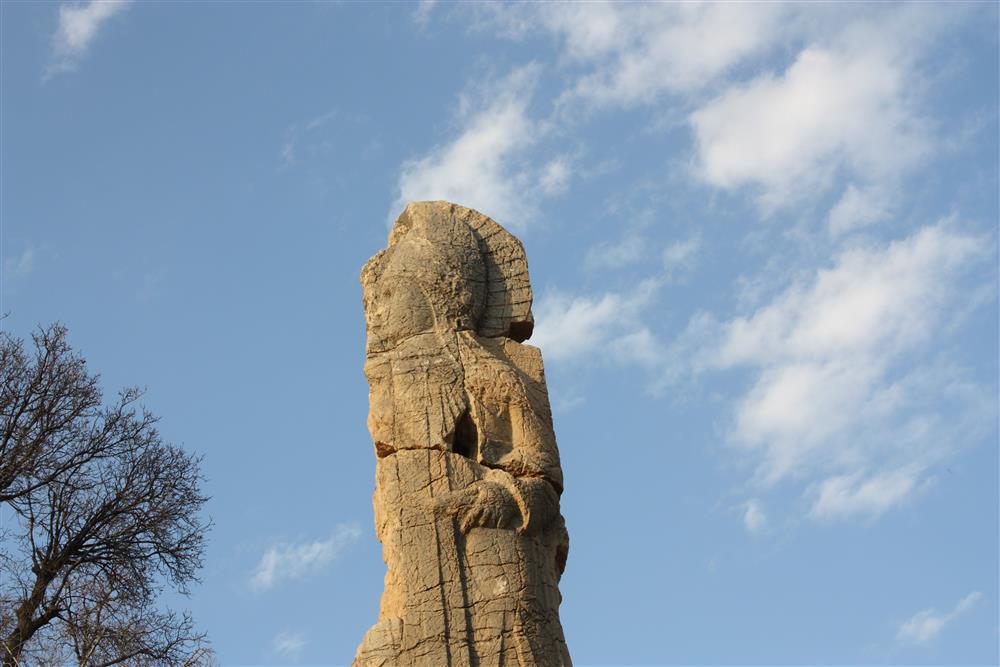Arsameia Ancient City served as the summer capital of the Kingdom of Commagene and is located approximately 26 kilometers east of the Kahta district in Adıyaman Province, Türkiye, on the opposite bank of the Kahta River (formerly known as Nymphois). According to ancient sources and inscriptions, the city was founded in the early 2nd century BCE by Arsames, one of the founders of the Commagene Kingdom. Arsameia is an important archaeological site, notable especially for the structures and inscriptions commissioned by King Antiochos I.

Arsameia Ancient City (Adıyaman İl Kültür ve Turizm Müdürlüğü)
History and Foundation
According to the inscriptions of King Antiochos I, the founding of the city is attributed to Arsames, considered the ancestor of Commagene. The inscriptions state that Arsames established the city on a double-peaked hill located in the valley through which the Nymph River (Kahta River) flows, taking advantage of the geographical conditions. During the Commagene period, this area functioned as the kingdom’s summer administrative center as well as a religious and ceremonial site.
Architectural and Archaeological Remains
At the Arsameia site, most of the structures date to the reign of King Antiochos I. The ruins of the summer palace are located at the highest point of the area, on a platform which also hosts a monumental tomb (Hierothesion) believed to belong to King Mithridates Callinichos. Along the southern ceremonial road leading to the tomb, there is a relief stele depicting Mithridates.
Another notable feature of the site is a rock-cut tunnel approximately 158 meters long. While its exact purpose remains uncertain, it is thought to have been constructed for religious or monumental functions. Above the tunnel, a relief stele illustrates King Antiochos shaking hands with the god Herakles. Other important finds at the site include a relief of Apollo Mithras, a water reservoir, figures related to the Commagene dynasty, dovecotes, and mosaic fragments.
.jpg)
Arsameia Ancient City (Türkiye Kültür Portalı)
Inscriptions and Religious Structures
Arsameia is known as the site of the longest Greek inscription discovered so far in Anatolia. This inscription provides detailed information about the city’s foundation, architectural arrangements, religious practices, royal lineage, Commagene laws, and ceremonies. The inscription is carved into steep rock faces and is arranged in columns, with the cult laws written using Latin letters.
.jpg)
Arsameia Ancient City (Türkiye Kültür Portalı)
The inscription holds significance not only historically but also culturally, offering direct insights into the administrative structure and religious rituals of the Commagene Kingdom. The area where the inscription is located stands out as one of the rare sites where the political and religious practices of the period can be studied in a comprehensive and integrated manner.
Geopolitical Location and Water Resources
Arsameia was established as a settlement spanning both banks of the Kahta River, known in antiquity as “Nymphois.” This water source was revered by the Commagene kings with a name meaning “life-giving water” and played a crucial role in the kingdom’s economic and strategic life. The Nymphois merges with the Cendere Stream before flowing into the Euphrates River, irrigating major Commagene settlements such as Samsat.
Excavations and Current Status
Today, Arsameia lies within the boundaries of Nemrut Mountain National Park and functions as an open-air museum. The first systematic excavations at the site began in the mid-20th century but were later halted for an extended period. Excavation activities resumed in the 2020s under the leadership of the Adıyaman Museum Directorate, revealing palace walls and surrounding settlement areas.


